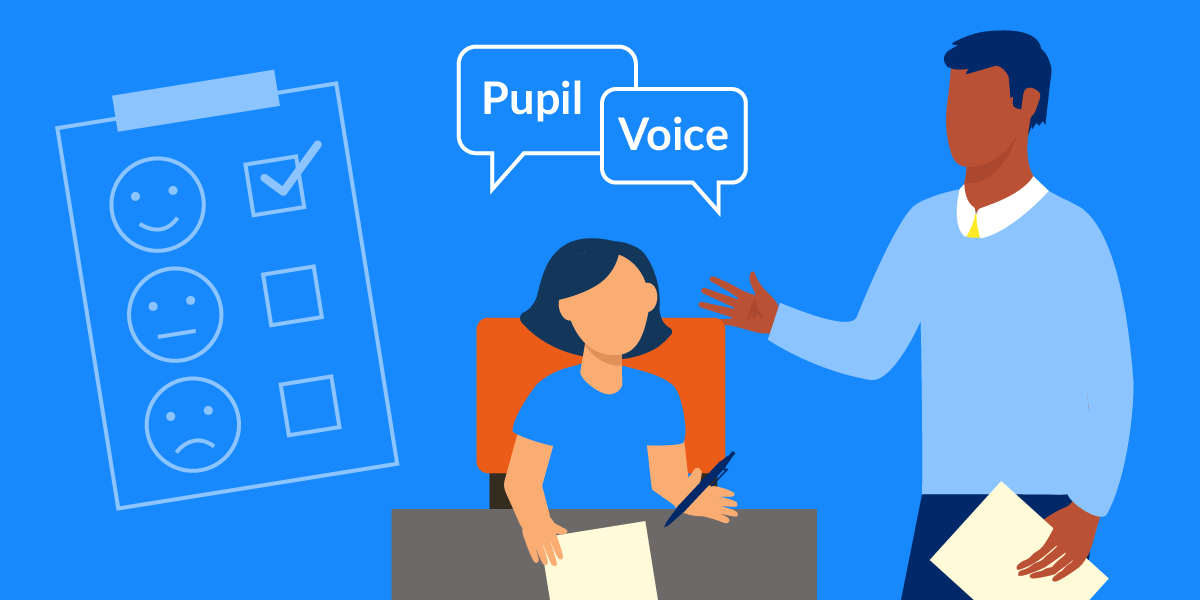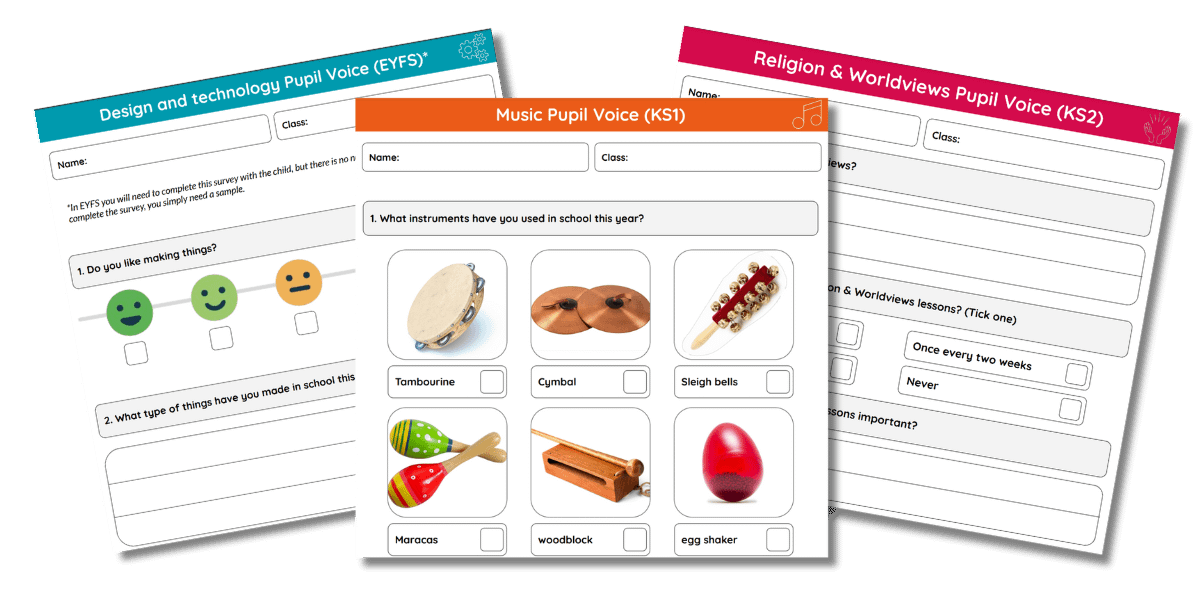Five Ways To Implement Effective Pupil Voice In Primary Schools
Published 7 December 2023 by Kapow Primary
Published 7 December 2023 by Kapow Primary

Pupil voice, alternatively called ‘student voice’ or ‘learner voice’ in some schools, is about the entire school community – teachers, staff and leadership – actively listening to and valuing children’s contributions. It isn’t just about giving children a chance to speak; it’s about genuinely engaging with their ideas and views.
Why does this matter? When children feel heard, it strengthens teacher–pupil relationships and promotes a sense of community. This approach also helps develop children’s confidence, communication skills, and engagement in their education.
Not only does pupil voice benefit children, but it also provides a valuable opportunity for primary schools. It demonstrates a school’s dedication to continuous improvement and high-quality teaching. By adopting pupil voice, schools show their willingness to listen, adapt and make positive changes to their educational approaches.
The Ofsted Inspection Framework recognises pupil voice as crucial for school effectiveness, focusing on how schools listen to and act on what their pupils say. This is vital to good leadership and contributes to an inclusive and responsive education.
Looking closer at the ‘leadership and management’ aspect of the framework, it’s clear that inspectors focus on how school leaders establish an open and positive culture, especially around safeguarding. An important part of this is putting pupils at the forefront. Leaders are expected to ‘actively seek and listen to the views and experiences of learners, staff and parents, taking prompt but proportionate action to address any concerns, where needed’.
It’s important to remember that embracing pupil voice should go beyond meeting the standards set by Ofsted. It’s a key part of primary education, vital for creating a school environment where each pupil’s voice shapes their education.
We’ve compiled five practical methods to support your journey with pupil voice, helping to boost your current methods with confidence.
Primary schools, and their approaches to pupil voice, vary. The key is to choose methods that align with your school’s specific resources, availability and goals. Consider these five methods to effectively implement pupil voice:
This popular approach in primary schools gives pupils a real platform and is formed by a group of pupils elected by their peers to represent them.
However your school establishes a school council, it’s key to create a system where every class and diverse group within the school is represented. This could involve a rotating council or class nominations. Remember to encourage participation from quieter or less confident pupils.
It’s also important to hold regular meetings, perhaps once a month, with a planned agenda. Teachers and staff should guide the council through topics but allow space for new ideas from pupils. This not only teaches leadership skills, but also reinforces that their opinions are valued.
Using an anonymous questionnaire or survey is a straightforward, yet effective, method to let pupils have their say. It allows pupils, no matter how quiet or outspoken, to have their voice heard. These questionnaires can cover a range of topics, from learning to school facilities. They are a powerful tool to collect honest feedback.
At Kapow Primary, we’ve created dedicated free pupil voice questionnaires as part of our schemes of work to easily collect pupils’ thoughts on various subjects.

Importantly, they are tailored to different key stages – EYFS, KS1 and KS2 – ensuring that the questions are appropriate and relevant for each age group, and providing valuable insights to shape teaching methods and curriculum planning.
Offering various expression methods is crucial in schools, and suggestion boxes serve as an excellent tool for this purpose. These boxes, easily accessible and placed in the classroom, empower pupils to share their ideas and suggestions at any time, without restrictions.
It may be helpful having two boxes: one for suggestions and another for concerns or worries, to effectively address the different types of feedback pupils may have.
Having children share their thoughts and ideas with one another is an interactive and engaging way to implement pupil voice. Sessions involve small groups of pupils discussing topics related to their school experiences, from classroom activities to broader school policies.
These sessions create a comfortable setting for children to express their views. They also encourage skill development such as active listening and empathy. It’s important that feedback is collected by teachers or staff so it can be used to inform school decisions.
Introducing problem-solving challenges is a cost-effective and innovative way to engage pupil voices, allowing children to develop teamwork and critical thinking skills.
Present real-life scenarios and challenges related to your school and invite pupils to brainstorm and propose solutions. This could involve tackling issues such as improving the playground, developing lunchtime activities or finding eco-friendly practices for the school. You could even integrate these activities into lessons.
Regardless of your chosen method for implementing pupil voice in your primary school, there are important factors to consider. Here are valuable tips and considerations to keep in mind as you develop your strategy:
Define clear goals: Chat with the school’s senior leaders about your aims for pupil voice, such as improving school life, adjusting teaching methods, or promoting inclusivity. Having clear goals will steer your efforts.
Safe and encouraging environment: Collaborate with pupils to create a safe, understanding environment for meetings and discussions, where teachers actively listen and pupils feel free to share thoughts without fear of judgement.
Staff training and support: Arrange training sessions for teachers on pupil voice, including effective listening and encouragement techniques such as open-ended questions. Ensure staff are well informed about safeguarding procedures in case a child makes a disclosure, which can happen through methods such as suggestion boxes.
Implement and share feedback: Act on pupil feedback where feasible, addressing common themes from pupil voice sessions, and regularly update pupils on the progress and outcomes to show that their input is valued and impactful.
Monitor and review the process: Regularly review your pupil voice strategy. Use surveys or casual discussions to measure pupil opinions, then adjust your approach based on their feedback.
It can be agreed that pupil voice is beneficial for everyone at school, both staff and pupils. It helps create a collaborative learning environment to feel safe, respected and valued. It goes beyond Ofsted requirements, deeply enriching the learning experience and allowing children to be a part of their own learning journey.